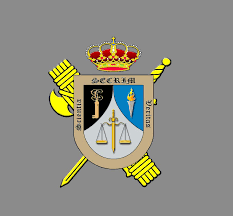

News
New law to restore 20% of EU land and sea
The EU has set the goal of restoring at least 20% of its terrestrial and marine areas by 2030 and all ecosystems in need by 2050.
Member States must restore at least 30% of deteriorated habitats by 2030, 60% by 2040 and 90% by 2050.
To achieve these general objectives, Member States must restore at least 30% of the habitats covered by the new law – from forests, grasslands and wetlands to rivers, lakes and coral beds – from poor to good status in 2030, a percentage that will increase to 60% in 2040 and 90% in 2050. In accordance with Parliament’s position, EU countries must give priority to Natura 2000 Network areas until 2030. When an area is in good condition, EU countries will ensure that it does not deteriorate significantly. Member States will also have to adopt national restoration plans detailing how they intend to achieve these objectives.
Agricultural ecosystems
With a view to improving the biodiversity of agroecosystems, EU countries will need to make progress in two of the following three indicators: the grassland butterfly index; the proportion of agricultural land with very diverse landscape characteristics, and the organic carbon stocks in mineral soils of cropland. In addition, measures should be taken to increase the index of common birds linked to agricultural environments, since these animals are good indicators of the general state of biodiversity.
As restoring drained peatlands is one of the most cost-effective ways to reduce emissions in the agricultural sector, EU countries must repair at least 30% of them (at least a quarter must be rewetted), 40% by 2040 and 50% by 2050 (where at least a third will have to be rewetted). The rehumidification process will continue to be voluntary for farmers and private landowners.
At the request of Parliament, the law includes an “emergency brake” that will allow targets for agroecosystems to be suspended in extraordinary circumstances if they greatly deplete the land necessary for sufficient food production for EU consumption.
Other ecosystems
On the other hand, the law requires a positive evolution of several indicators in forest ecosystems and that 3 billion more trees be planted. Member States will also have to convert at least 25,000 km of rivers into free channels and ensure that there is no net loss of the total national area of urban green space and urban tree cover.
Speaker’s statement
After the vote, the rapporteur César Luena (S&D, Spain), declared: «Today is an important day for Europe: from the protection and conservation of nature we move to restoration. The new law will help us meet many of our international environmental commitments. The regulation will serve to recover degraded ecosystems while respecting the primary sector by giving flexibility to Member States. We must thank the scientific community for fighting climate denialism and providing the evidence, and the youth for reminding us that there is no planet B or plan B.
Next steps
The agreement reached with the Member States was adopted with 329 votes in favour, 275 against and 24 abstentions. Before being published in the Official Journal of the EU and entering into force twenty days later, it must be adopted by the Council.
Context
More than 80% of European habitats are in poor condition. On 22 June 2022, the Commission proposed a Nature Restoration Law to support the long-term recovery of deteriorated terrestrial and marine ecosystems, achieve the EU’s climate and biodiversity objectives and meet its international commitments, in particular the Kunming-Montreal Global Biodiversity Framework. According to the Commission, the new law would bring significant economic benefits, since each euro invested would translate into at least eight euro of benefits.
This legislation responds to the expectations of citizens regarding the protection and restoration of biodiversity, the landscape and the oceans, as expressed in proposals of the conclusions of the Conference on the Future of Europe.
The post New law to restore 20% of EU land and sea appeared first on Spain Today – Breaking Spanish News, Sport, and Information.
-

 Driving in Spain2 weeks ago
Driving in Spain2 weeks agoHow Long Does it take to Receive a Traffic Fine Through the Post?
-

 News2 weeks ago
News2 weeks agoYour Task for This Week is to Seek Out a Monument – The Week Ahead
-

 Health2 weeks ago
Health2 weeks agoQuirónsalud Elche and Quirónsalud Gran Alacant strengthen their services with the incorporation of a new team specialised in advanced ophthalmology
-

 Court News2 weeks ago
Court News2 weeks agoMan in court accused of trying to kill ex-partner with an axe






















